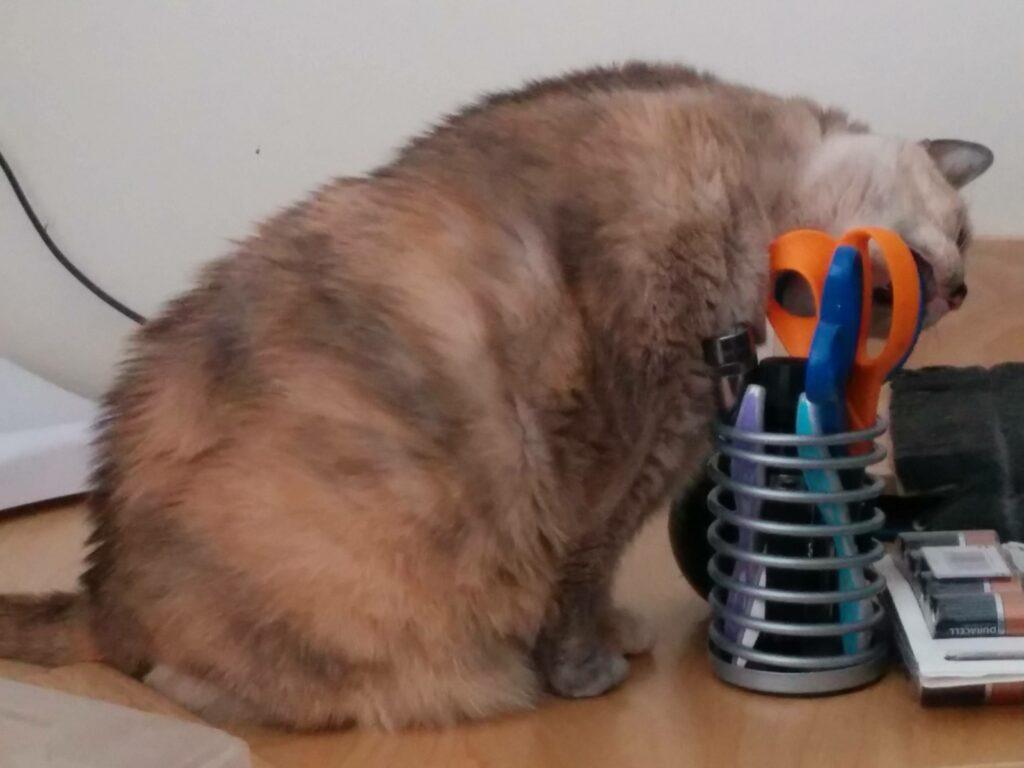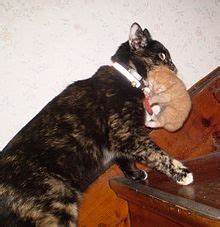Does your cat have some bad habits that you need to find a way to change? It’s amazing how such a sweet, small animal can place you at wit’s end when he engages in some behavior that simply will not be tolerated. So, what do you do to change such bad habits? Learn how to discipline a cat.
First of all, if this behavior is something that has started suddenly for no apparent reason, perhaps the cat has some physical condition that is the underlying cause. You might want to start with a trip to the vet, to determine if an underlying health problem might have triggered this bad behavior.

If your kitty receives a good bill of health from your vet, then you must find a way to get your cat to change his behavior. Here’s the first rule to remember: Reward kitty for good behavior and discipline when it’s bad behavior.
Get validation from the vet that his health is okay
Because your cat has a good memory, he will remember what he can get away with repeatedly. To change a behavior, you must find some positive reinforcement that the cat will enjoy. Select something that you can use to entice the cat to do what you want. If you save this special “reward” for training, the cat will find the reward much more desirable.
Try these ways to discourage bad behavior:

1) Make a loud, disruptive noise. A suggestion from one of my references calls for a can of pennies that will make a loud sound when shaken. The noise will startle the cat so he will stop what he is doing.
2) Find a suitable deterrent. If you wish to stop your cat from chewing on something, try using something like a citrus spray, as many cats dislike the smell of citrus. Or, try a commercial available spray which has the purpose of keeping cats from certain areas.
Some special sprays taste bad and will discourage the cat from chewing the object.
I must agree with the latter opinion, and base my position on experience. When I lived in Bell’s Flats in Kodiak, the neighbor’s cat, Tiger would come in the cat door first thing in the morning. Tiger was about six months old when we moved in, and bonded immediately with Carlos. He must have felt the need for instruction from an older cat.
3) Try a water spray bottle. Though using a water spray bottle to deter a cat from misbehaving has been suggested by two of my four references, other references say don’t spray a cat with water.
I really didn’t want him coming in whenever he felt like it. The neighbor suggested using a water spray bottle. “Just spray him when he comes in — he hates it,” she said.

Well, she was right — he did hate it. As soon as I sprayed him, he’d leave, only to come back in a few minutes later. I finally gave up and let him come in whenever he wanted. He loved Carlos, and just wanted to be with him.
The upshot of the situation: Tiger never liked me. I couldn’t pet him, or even touch him — he’d hiss or slap at me. He remembered that water bottle and never forgave me.
4) Try double-sided tape or aluminum foil. Place either of these on surfaces where you don’t want your cat to scratch. He doesn’t like the texture, so he will leave that spot alone.
5) Use the “startle effect.” Say something like “ouch!” in a very loud voice. This technique will help stop aggressive behavior. I’m finding it effective when teaching Mocha not to bite.
6) Time for a time out. Shut your cat in the bathroom or another room with no people for 20 minutes to stop him from misbehaving. Often, when he comes out again, he will have a different attitude.

7) You might try clicker training. The cat cannot receive training like a dog. He won’t be much into vocal commands or hand signals. When disciplining or training a cat, you must develop much more patience.
8) Does your house cater to feline needs? If you expect good behavior from kitty, hold up your end of the bargain.
a) Make sure the litter box is cleaned regularly, and that it’s the kind of box your cat prefers. My Pogo had a problem with peeing outside his covered litter box in his old home. When he moved in with me, I gave him a box with no cover, and his misbehaving stopped.
b) Does he have a scratching post? Get him a sisal one, but also try one or two of the very inexpensive cardboard ones. Sometimes a cat really likes these. Pogo did — he wouldn’t use the sisal, because his claws got stuck in it, but he shredded the cardboard one very well.
c) Give him an elevated climbing space or invest in a cat tree.
d) Play with him often. He can get bored if ignored for too long.

9) Walk away from bad behavior. If you withdraw from him or redirect his attention, he will start to get the message. Another way to redirect his attention is to produce a distraction, such as a toy for him to attack.
Here are a couple of other suggestions of ways to redirect the cat’s actions: If he continually tries to use the sofa as a scratching post, drape a loose piece of fabric over the spot. When he tries to scratch, the fabric will fall, thwarting his action.
When using double-sided tape to deter him from counter-jumping, put the tape on the area where his feet land. He will hate that sticky sensation on his little paws, and will learn to avoid the area.
Here are some “dos” to use when training your cat:
First and most important, do recognize that the cat does not realize he has misbehaved. Do not punish him, as he will not associate the punishment with the reason for it. You must try to discipline, not punish; teach, not create an enemy.
Punishment leads to negative results, such as anxiety, fear, or avoiding you. It can also lead to worse behavior than the problems he already has.
Never physically hurt your cat. No spanking, hitting, kicking, or intentionally hurting him. These can lead to more disruptive aggressive behavior.

Do not scruff (pick the cat up by the loose fur at the scruff of the neck) an adult cat — This practice only works for mother cats carrying very young kittens. For an adult cat, scruffing is painful, and will only make the issue worse.
Instead, put a blanket over the cat and scoop him up inside it. Then you can safely move the cat.
Always use positive reinforcement
Positive reinforcement is the key. Give praise when kitty does something you want him to do, such as using his scratching post. Treats make good positive reinforcement. Make sure you have them handy when training your cat.
Spend time with your cat, giving him positive interaction, play, or petting. Make sure to praise him whenever he does something right, especially if he’s changed his behavior in a positive way.
If kitty has a problem you wish to change, you must remember two things:
1) Take care of the problem immediately. It will not go away if you do not deal with it as soon as it arises.

2) Consistency becomes important. If you start working on a problem with the cat and do not stay consistent in addressing it, the cat will learn slowly or not at all.
The bottom line: you know your cat. Find out what things motivate him to change and ways to make him want to change (for the reward.) If you are consistent, patient, loving, and gentle, you will be successful. Then, both you and the cat will have a more satisfactory relationship.
References I used for this post: thesprucepets.com/how-to-discourage-bad-behavior-551821 hillspet.com/cat-care/routine-care/how-to-discipline-a-cat pawmaw.com/blog/how-to-discipline-a-cat pawtracks.com/cats/cats-discipline/

